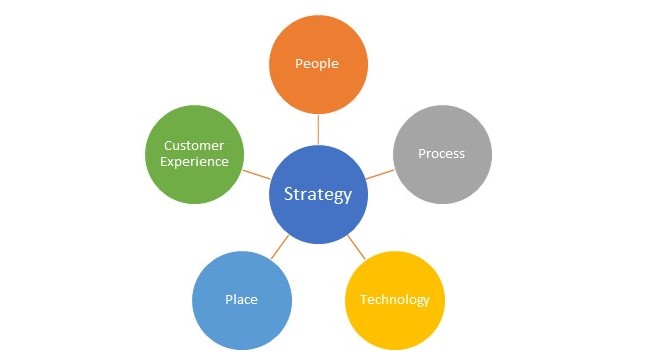In a recent article I discussed some of the issues arising from Homeworking and how it is great for some but not so easy for others.
The question as organisations start to move towards a ‘normal’ position is what do we want normal to be and how can we ensure that it meets the needs of the business, its staff and customers? Most organisations have coped really well with the cards that they have been dealt with but what next?
In this article I will be examining some of the options and perhaps most importantly, highlighting potential opportunities.
The impact of the COVID-19 situation has resulted in unique and challenging circumstances. The sad fact is that many organisations have not been able to sustain the cost of this crisis and will be closing their business or part of it.
For those that have survived, it is still a very difficult challenging time. Offices are closed or have minimum staffing levels to adhere to social distancing. There is an underlying tension for many as they adapt to the changing business environment. The future is uncertain for all concerned.
When considering how to move forward, Managers now have a dilemma.
Do we return to the old way of working?
Are we going to see all of our staff working in the same way as they previously did?
Are we going to revert back to the established operating models and behaviours?
The deployment of technology and virtual working has been extensive and in the majority of cases very successful. People have adapted to a different working environment with different approaches to working in isolation but as part of a team.
Smart business leaders will already be considering the future in a different way. The lockdown has identified a number of new considerations and the opportunity to plan from a different starting point. Some simple questions need to be answered such as:
We have not done this activity and nobody has missed it. Do we need to still be doing it?
What is the best operating model for our people?
Is the current temporary model sustainable and safe?
What is the most effective communication model?
What do our customers think?
Have customers behaviours/preferences changed during lockdown?
By looking at the various components of delivering service to customers it is important to consider a wide number of areas as discussed below.
Strategy
What is the organisations’ overall strategy and business plan and how does the contact centre support and deliver against that strategy?
Has the objective changed?
For some organisations, the changes resulting from Covid-19 are permanent.
For example, the use of online shopping has increased substantially with less visitors to retail outlets.
The use of video tools has resulted in a different mode of internal communication but is it the best way?
What is happening to the cost of service as services have adapted and behaviours changed?
People
We often declare that people are the real differentiator in customer service. Recent research has shown that people still like to engage with another person when seeking reassurance or dealing with complexity. For many people who have been forced into working at home, it has been a bit of a rollercoaster experience.
How have they coped without regular contact with colleagues?
What has changed about the support that they require during a working day?
Are they able to be as productive or as comfortable at home as they are in the office?
What do people need from their work and how do you ensure that you are getting the best overall return from the investment in people?
Process
Many processes have had to change or be shelved during this period of change. The earlier question about whether previous processes are needed or not is valid but some thought needs to be given as to the original need for certain processes. Regulatory or compliance issues may have slipped down the priority list in favour of business continuity but these issues will return and may be mandatory. Operational processes will have changed with varying circumstances but these too need to ne reviewed and refreshed to meet changing needs.
Technology
Technology has been a real enabler of home working during the recent crisis. The ability to set up virtual teams in remote locations whilst still enabling access to core systems has been an amazing feat. The technology has been available for a long time but it is the application and the agility to change that has been missing. Many people have now become accustomed to this technology as they have increased their personal adoption. People are using video messaging in day to day lives to communicate with family and friends. The technology is now proven and accepted with the exception of some issues with connectivity and the quality of internet connections.
Technology has become the enabler rather than the driver and once again, when looking forwards we should bear this in mind. Just because it can does not mean it is the best solution; start with the business requirement and then determine how to use technology to deliver it.
Place
The place where people have worked for the last few months has changed for many. They no longer have a commute to an office or travel for meetings.
Does this mean that all organisations should close their offices?
Does it mean that everybody will have to work from home?
The answer to both is probably no but there will undoubtedly be changes.
It is anticipated that many organisations will move away from having large offices where everybody goes every day. But there is a benefit of having people working together in the same place. Communication improves, people have impromptu conversations that shares information. Support environments are improved and socialising in the workplace enables the building of strong relationships.
The answer will depend upon individual organisational requirements and needs together with the needs of their people. I fully expect some downsizing of office accommodation with more hotdesking and increased use of hosted office space but for others, the maturity of the organisation, the technology and the culture will still require people to work together in the same location.
Customer experience
The experience for customers has been difficult to gauge over the last few months. The need to contact organisations has varied considerably with some showing dramatic increases in customer demand and others having significant reductions. Customers expectations have changed too. I have observed that demand has dropped in some areas where the need for contact has reduced, expired or is simply not as important as previously. The travel sector has seen volumes reduce as demand for services has reduced. Hospitality and some entertainment volumes have almost disappeared. For others where there has been an urgent need for contact, there have been huge peaks. Financial services have refocused their services into areas that support their customers. Government agencies and departments are having to deal with enquiries from taxpayers that would never have been imagined.
Customers have acknowledged and accepted that the world has been in a crisis situation and has moderated expectations. I hear that some organisations believe that this is now the new normal and that they can continue to deliver a reduced service due to a lack of complaints, I do not believe this to be true.
We have also seen this applying to using different channels and it will be interesting to see how the analysis of this will change the way that organisations behave.
Customer experience has become a differentiator and the development of trust when engaging with a business has led to increased loyalty. As customers, we will make allowances but we will expect to return to previous levels of service and a quality experience.
In returning to the original theme of this article, how should we proceed. My view is that there is a need to consider all of the above and develop a new strategic direction. As the world has changed, companies will need to be agile and adapt to changing needs for themselves, their people and their customers. It is not simple and there is not an unlimited timeline but it is important to make the right decision and move swiftly when the time is right.
With over 20 years experience, Mpathy Plus have been helping clients develop their customer service and contact centres to ensure they are delivering on behalf of the organisation, its people and its customers.




